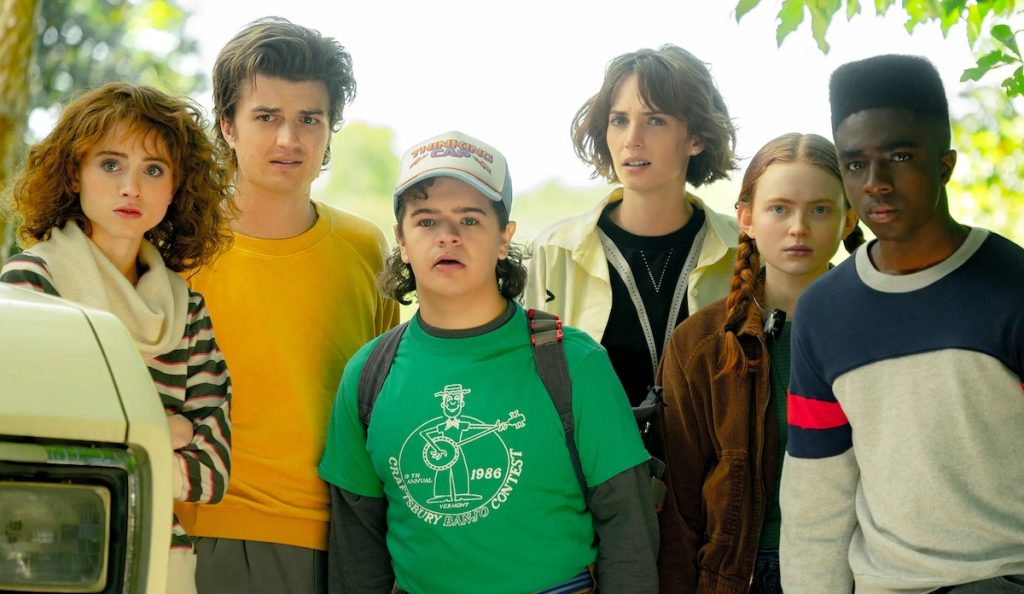
After more than 35 years of operation, TBI is closing its doors and our website will no longer be updated daily. Thank you for all of your support.
Netflix loses 970k subs in Q2, plans for slow growth & steady $17bn content spend
Netflix lost roughly 970,000 subscribers in Q2 2022, a lower figure than its own previous estimate of two million, and plans to keep its current $17bn annual content spend steady until at least the end of 2023, predicting a slow return to growth in the next quarter.
The streaming giant now has a total 220.67 million subscribers worldwide, down from 221.6 million in the previous quarter, and also saw revenue in the period ending 30 June drop to $7.84bn from $7.97bn in Q1.
Its greatest subs losses came from the US and Canada, which is its most profitable market, where 1.3 million exited to a new total of 73.3 million subscribers. However, its share of viewing time in the US hit an all-time high in June, rising to 7.7%, according to Nielsen data.
Netflix also lost around 700,000 subscribers in EMEA, with its total now at 72.9 million in the region. These declines were however mitigated by an additional 1.08 million new subscribers gained in APAC, rising to a total 34.8 million, while subs remained steady in Latin America, rising by roughly 10,000 to 39.62 million.
The less severe than predicted sub-million subscriber decline was met with cheers from investors, with Netflix’s shares rising by 7% in after-hours trading. The regular trading session closed at a share price of $201.63 – the highest since April.
For the past two months, Netflix shares have been trading below $200, though the new price is still substantially lower than last autumn when the stock was trading as high as $700.
“We’re talking about losing one million instead of losing two million, so our excitement is tempered by the less bad results,” highlighted Netflix founder Reed Hastings following the company’s Q2 results. “Tough in some ways losing one million and calling it success, but really we’re set up very well for the next year.”
Hastings suggested that the reduced damage was down to “lots of titles, lots of viewing,” and “if there was a single thing, we might say Stranger Things”. The fourth season of the sci-fi horror series was released in two halves this year, with the streamer recording 1.3 billion viewed hours as a result.
CEO Ted Sarandos, meanwhile, pointed to Stranger Things and other titles hitting “new heights” with “back to back” success stories like like Bridgerton and Squid Game representing “a phenomenal sign of progress.”
He added: “I think Gray Man will join Red Notice and The Adam Project and Don’t Look Up as among the most popular movies of the year, not just on Netflix, but period. And I think that really is a testimony to these teams and the teams around the world, working great with creators to create a platform for them to do the best work of their lives.”
Moderated growth & AVOD rollout
Netflix predicts that it will return to growth in Q3, with a conservative estimate of one million additional subscribers, which would be below growth levels in the same period in previous years.
The streamer is expecting its annual content spend of $17bn to remain steady through to the end of 2023, with Sarandos commenting that the figure is “kind of in the right ZIP code” for the next few years.
“We have come through a pretty big business transition,” added CFO Spencer Neumann during the company’s post-earnings Q2 call, in which he said content spend will increase, but will be “moderated,” explaining: “We have gotten smarter in how we can direct our spend for greatest impact.”
Discussing the impact of the pandemic on the business, Neumann revealed that “at various times” 5%-10% of overall spend was on Covid-related costs, which he said had been “a big kind of drag on our overall efficiency of spend.” Sarandos clarified: “That wasn’t an overall 5% across all production. Some of them [were] impacted a lot more than others.”
Netflix also revealed that it is looking at an early 2023 launch for its cheaper ad-supported tier, with which it recently teamed with Microsoft as its tech and sales partner.
The streamer plans an initial rollout of the tier in a small number of markets, which it is yet to name, before taking it global. Sarandos also explained that “the vast majority of what people watch on Netflix, we can include in the ad-supported tier today,” but stressed that “certainly not all of it” would be available via the AVOD tier.
“While it will take some time to grow our member base for the ad tier and the associated ad revenues, over the long run, we think advertising can enable substantial incremental membership (through lower prices) and profit growth (through ad revenues),” said Netflix.
The recent lay-offs at Netflix, totalling more than 450 jobs, meanwhile, cost the streamer $70m in severance costs, it revealed in its financial report.
However, the company is to bring more than 800 staff under its umbrella following the announcement that it is acquiring Sydney- and Vancouver-based animation studio Animal Logic, with which it has previously worked on The Magician’s Elephant and the upcoming The Shrinking Of The Treehorns
The streamer said the deal will “accelerate the development of our animation production capabilities and reinforces our commitment to build a world-class animation studio.”




